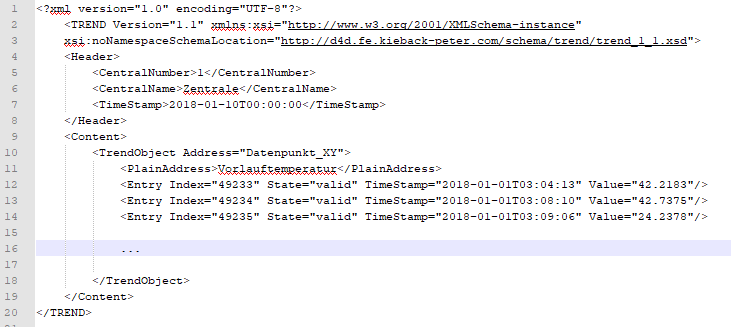Parser Overview
Here you find the description of public available data import interfaces of the Digital Testbench. If you don’t find a suitable import format, please contact us: we are offering an efficient development of import plugins for your needs.
Default Parser
Our default parser is a generic import tool that supports CSV, XLS and XLSX documents with a common internal structure. To configure the parsing the following parameters have to be configured to match the provided information.
| Parameter | Description |
|---|---|
| Template | Define a template of your settings for a later reuse. |
| Encoding | The character encoding of your file. Please check the correctness in the oreview area. |
| Separator | The used separator character in Character Separated Value (CSV) files. |
| Escape Character | The escape character used to escape enclosing separator characters |
| Format | Vertical means a that timestamps are on the vertical axis of your file (timestamp per row). Horizontal means that the format is pivoted and the timestamps are on the horizontal axis (timestamp per column). |
| Block length | The occurance of the next datapoint/timestamp. One means (according to vertical or horizontal format) the next row or column. If there are unused or empty cells, please increase the block length. |
| COV mode | Please use the Change-of-Value mode if your raw data is stored as value changes instead of equidistant values. |
| Import mode | You can select if you want to append new values or overwrite existing ones during import. The overwrite mode may take longer. |
| Sensor filter | Please choose if you want to import only existing data points, only new ones or disable the filter to import all data points contained in your raw data. |
| Interpolation | You can define the interpolation period in minutes where the raw data will be interpolated to match an equidistant measure. |
| Name | The name of the data point, which is used to associate the measures. |
| Name Prefix | You can enter a text prefix that is used to prepend to all data point names during import. |
| Short Info | A short description of the data points. |
| Long info | A description of the data point. |
| Min | The minimum value that is used to determine outliers. |
| Max | The maximum value that is used to determine outliers. |
| Unit | The physical unit of the measured values. |
| Date | The cell that is containing the date information of your measured values and the appropriate date format.
Individual formats can be specified using the Java Date & Time format. |
| Time | The cell that contains the timestamp of your measured values and the appropriate timestamp format. Date and time may be contained in the same cell.
Individual formats can be specified using the Java Date & Time format. |
| Value | The cell of the first measured value occurance. |
ENerGO+ Column Format
A proprietary file format of ENerGo+ energy management software with the following structure:
| Datenpunkt_X | 2017-12-27 | 00:00:00 | 1234 | kW |
| Datenpunkt_X | 2017-12-27 | 00:15:00 | 2345 | kW |
| … | … | … | … | … |
| Datenpunkt_Y | 2017-12-27 | 00:00:00 | 1234 | C |
| Datenpunkt_Y | 2017-12-27 | 00:15:00 | 2345 | C |
| … | … | … | … | … |
Kieback & Peter Column Format
A proprietary CSV-based file format of Kieback & Peter automation systems with the following structure:
| plaintext | address | unit | timestamp | value | |
| Datenpunkt 1 | DP1 | 1 | 27.12.2017 00:00 | 1 | |
| … | … | … | … | … | |
| Datenpunkt 1 | DP1 | 1 |
|
99 | |
| Datenpunkt 2 | DP2 | 1 | 27.12.2017 00:00 | 1 | |
| … | … | … | … | … |
Kieback & Peter Trend XML 1.1
A proprietary XML-based trend file format of Kieback & Peter automation systems with the following structure:

Siemens ADP Parser
A proprietary Siemens ADP file format with the following structure:
| name | name1 | QA | name2 | QA | … |
| shortinfo | … | … | |||
| unit | … | … | … | ||
| 01.01.2018 00:00 | 0 | 7 | 42.0 | 7 | … |
| 01.01.2018 00:02 | 1 | 7 | 42.1 | 7 | … |
| … | … | … | … | … | … |
